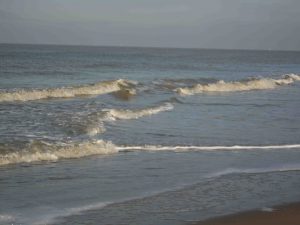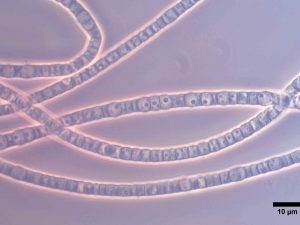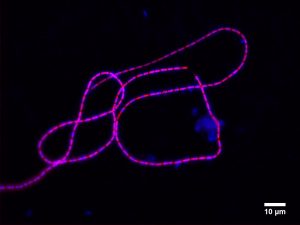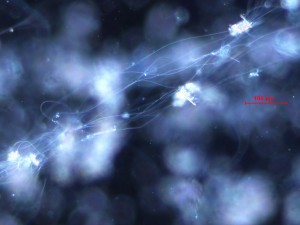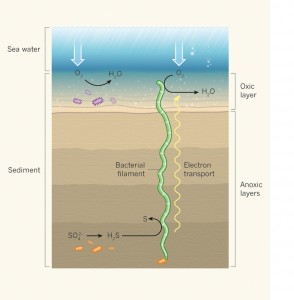
Figure 1. Conceptual scheme of long-range electron transport in marine sediments. Electrons are passed from cell to cell along a sequence of more than 10000 cells in a bucket brigade fashion. This results in an electrical current from the deeper sediment layers where sulfide is produced to the surface layer of the sediment where oxygen is present. The overall process makes the sediment act like a battery. Adapted from Reguera (2012, Nature 491, 201 – 202)
A natural battery
The electrochemical cell was invented by Alessandro Volta in 1800, and it is generally considered to be a stroke of superb human genius. Now it is clear that micro-organisms have invented and exploited this process for millions of years (Figure 1). The recent discovery of long-range electron transport makes that the sediment in essence operates like an natural biogeobattery. This discovery shows how inventive the process of biological evolution can be. By creating a natural battery, these electricity generating bacteria gain an enormous advantage in the competition for sulphide, which is the electron donor for their metabolism.

